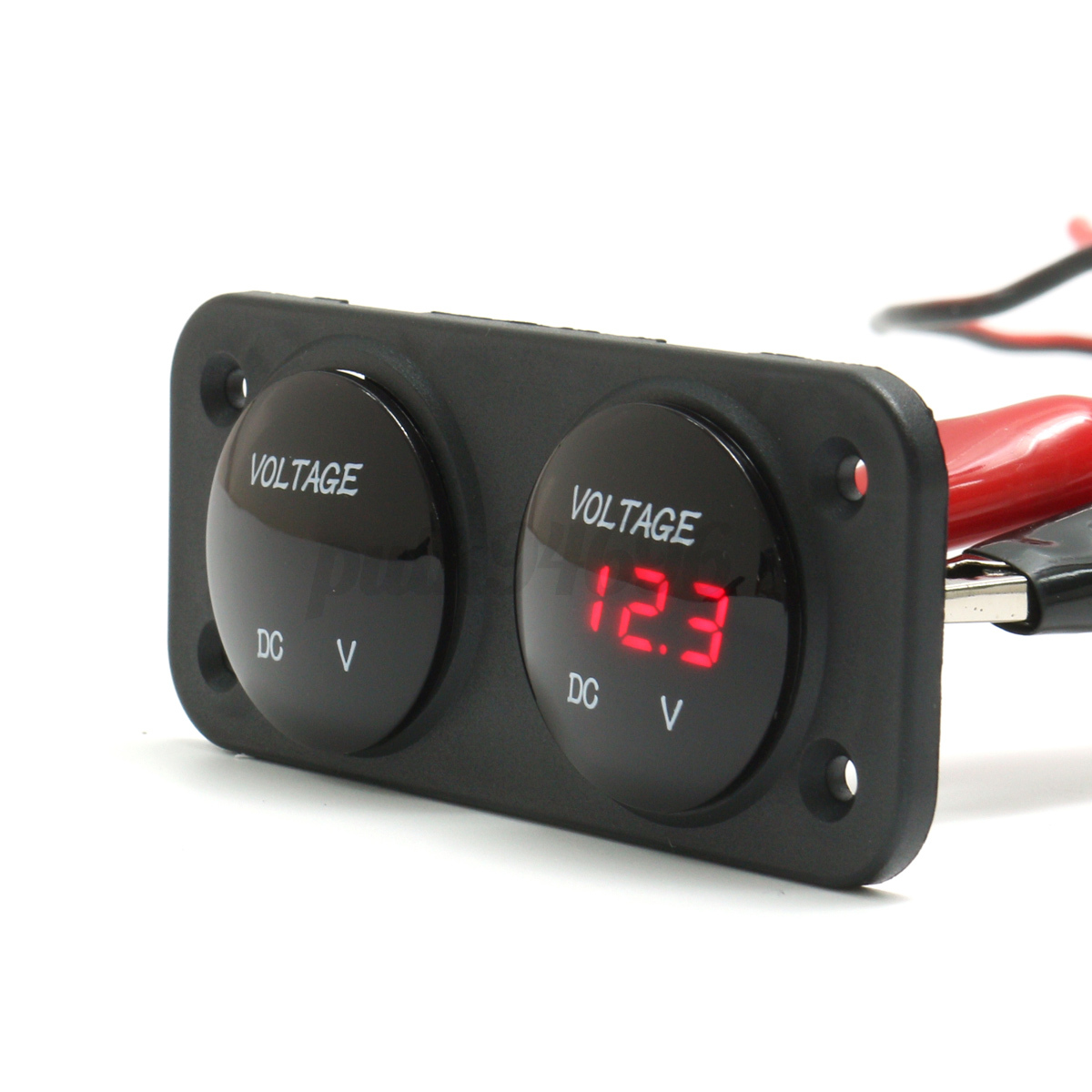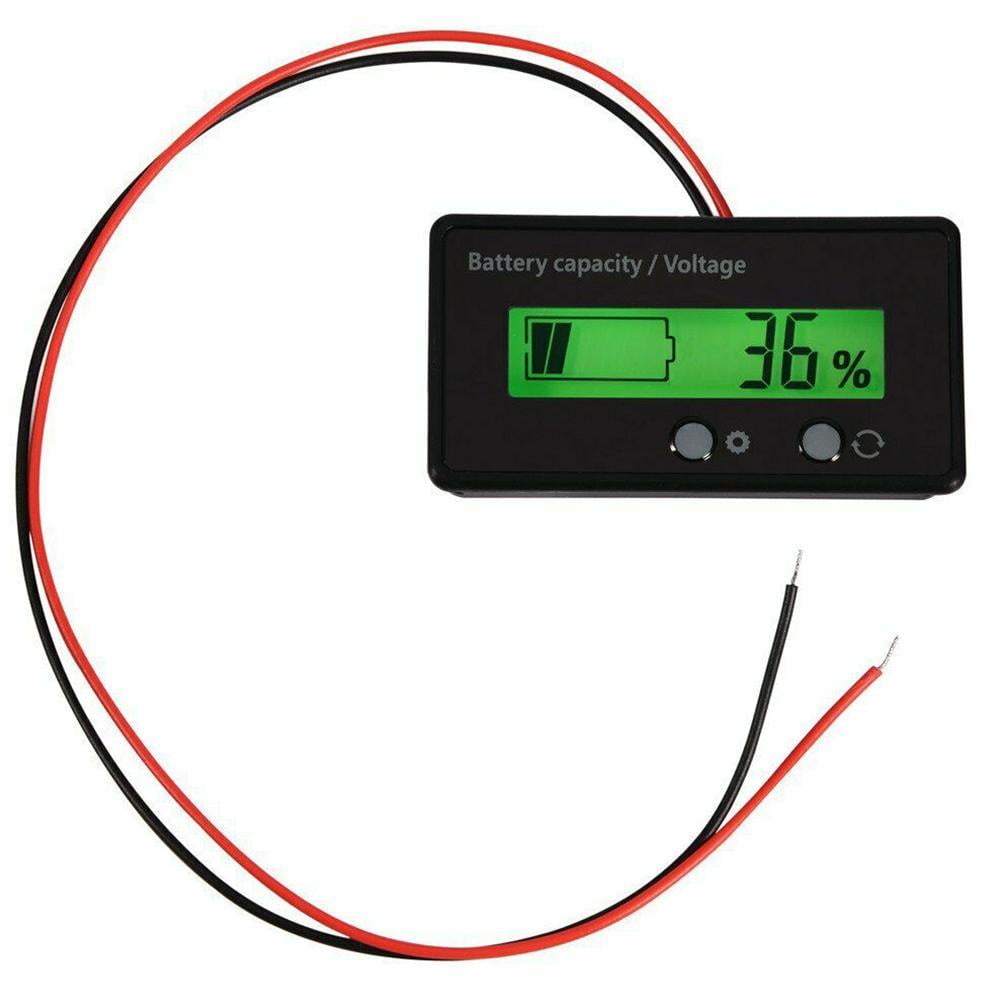
- #12V BATTERY METER MARINE INSTALL#
- #12V BATTERY METER MARINE UPDATE#
- #12V BATTERY METER MARINE SOFTWARE#
Many modern BATTERY CHARGERS exist in this day and age. Pictured: Victron Centaur Battery Charger, 24 Volt | 60 Amp, a three-stage battery charger. Trickle chargers keep the voltage at 13.8 volts which boils and eventually ruins a battery. The result is a slow incomplete charge, sulfate deposit build-up, excessive gassing and reduced battery life. These designs can accommodate only one charge voltage, and therefore must use a compromise setting - typically 13.8 volts. Most BATTERY CHARGER designs and standard ALTERNATORS installed on boats cannot deal with the conflicting voltage requirements of the initial "bulk charge" and subsequent "float" or maintenance stage.

Higher voltage levels will "gas" the battery and boil off electrolyte, again shortening battery life. Once fully charged, MARINE BATTERIES should be held at a considerably lower voltage to maintain their charge - typically 13.2 to 13.4 volts.

Over time, these deposits will cause a 200 amp-hour battery to act more like a 100 amp-hour battery, and battery life will be considerably shortened. (For 24 volt systems, double these figures.) If taken to a lesser voltage level, some of the sulfate deposits that form during discharge will remain on the plates. The accumulation of such deposits, otherwise known as sulfation, is the most destructive process in the life of any lead-acid battery.Ī typical 12-volt lead-acid battery must be taken to approximately 14.2-14.4 VDC before it is fully charged. As this barrier becomes thicker and thicker, the battery's ability to accept a charge or deliver energy is diminished, resulting in the perception that the battery is no longer usable. If, however, the battery is left in a partial state of discharge for as short as 3 days, the lead sulfate material will begin to harden and crystallize, forming a permanent insulating barrier. During the battery's recharge, this material is lifted off the plates and recombined into the battery's electrolyte solution. When a lead-acid battery is discharged, a soft lead sulfate material forms on the battery plates. The following information is designed to help you, the consumer, protect the lifetime of your battery bank, to ensure correct operation and maintenance of lead-acid marine batteries, as well as to detail correct procedure and the reasons batteries can fail. Purchasing batteries is the first step - protecting them is the next. This fall and rise can be quite substantial, especially when a heavy current is flowing, so how can the terminal voltage be used to calculate anything without knowledge of the magnitude of the current involved?.ĭisplay 100 AMP shunt link to M8 Ring terminal 5 m cable."Few batteries die a natural death, most are murdered."Īs once said by someone in the marine battery industry, the most common cause of damage, dysfunction, or depletion of a battery is user error. ** Some say that they can calculate the state of charge from the terminal voltage only but, as we all know, the terminal voltage falls when the battery is under load and rises when under charge.
#12V BATTERY METER MARINE INSTALL#
It is a true battery monitor, easy to install and excellent value for money. The BM1+ does all this whist consuming a meagre one and a half milliamps. The algorithm includes Peukert's equation to ensure accuracy over a wide range of load currents. This means that, unlike many other systems that rely solely on amp hour integration, the NASA BM1+ never needs to be re-synchronised with the battery.
#12V BATTERY METER MARINE UPDATE#
One based on integrating amp hours over the charge and discharge cycle, the second based on an adaptive internal mathematical battery model.Ī unique feature of the BM1+ is its ability to use information from both algorithms, during the charge/discharge cycles, to continually update its performance. In fact two separate algorithms are used.

#12V BATTERY METER MARINE SOFTWARE#
The simple display format does not mean the internal software is unsophisticated. A resettable Amp Hour counter is provided for checking the efficiency of the charging system or keeping a track of power consumption and a second input lets the user monitor the voltage of the starter batter. The instrument also warns the user when the charge level is too low so that load can be shed or charging commenced to protect the battery.

A simple and intuitive display shows the service battery voltage, charge/discharge current, state of charge, and time to charge/discharge. The BM1+ measures both these parameters and computes the state of charge using a complex, well proven, algorithm. How does it work? The minimum information required to monitor the state of charge of a battery is the terminal voltage and the charge/discharge current **.


 0 kommentar(er)
0 kommentar(er)
